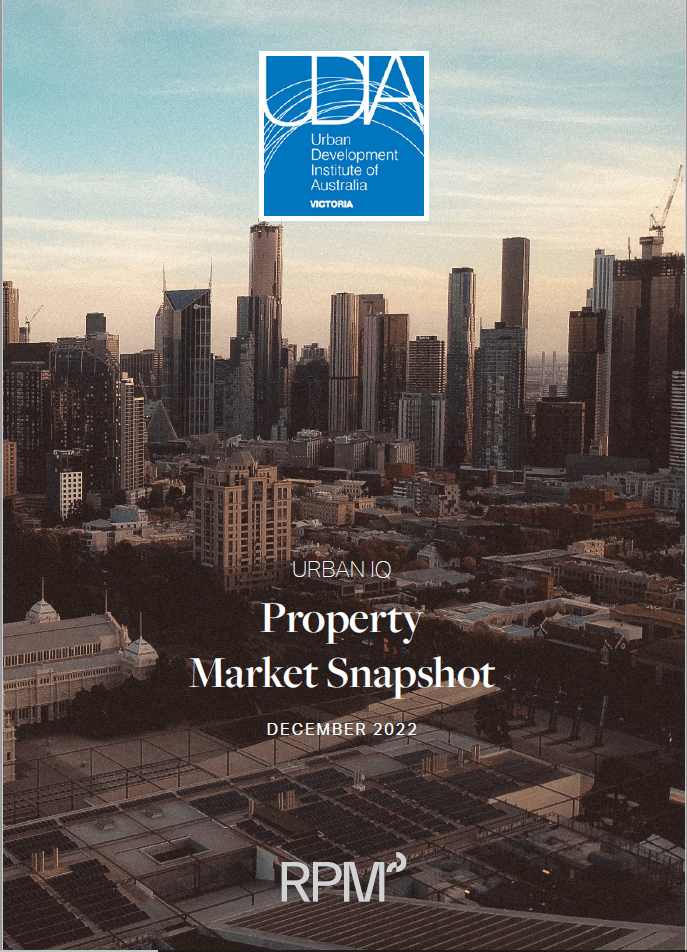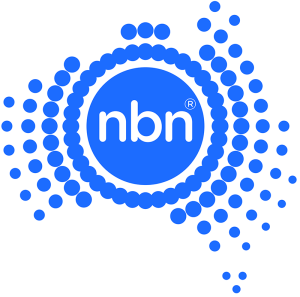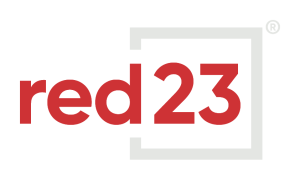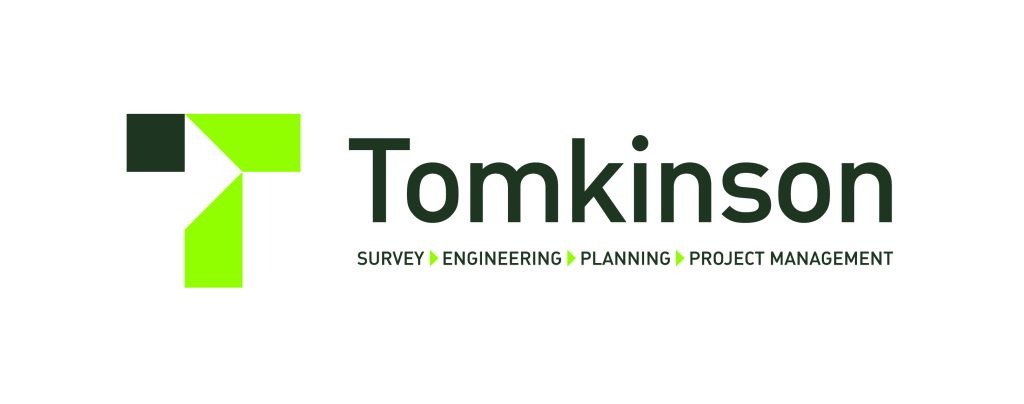
UDIA Victoria, in partnership with RPM Group, has released the latest quarterly URBAN IQ research publication.
The research provides data, research and analysis to help our members understand the conditions in which we are operating.
Read the full Urban IQ Q3 here
Summary of Key Findings
Economic Overview
- Gross Domestic Product
Australia’s quarterly GDP continued to grow achieving 0.60% over Q3 2022. However, this was more modest than the previous quarter (0.80%). - Household Savings Ratio
Consumer spending has been defiantly strong with many maintaining consumption patterns by drawing down on savings accumulated through the last two years. - Household Consumption
Increased spending on services has been driven by dining out and travel. While there has been a strong uplift, the total value of consumption remains below that recorded pre-pandemic. - Interest Rates
3.10% Cash Rate (Dec 2022)
7.27% Standard Variable Rate for Owner Occupiers (Nov 2022)
5.84% Discounted Variable Rate (Nov 2022)
6.30% 3 Year Fixed Rate (Nov 2022)
The cash rate is now the highest in a decade following the RBA’s 25 basis point increase in December to 3.1%.
The RBA anticipating inflation to peak at 8% in the 12 months to December then soften through 2023 before hovering just above 3 % in 2024. - CPI and the New Dwelling Index
7.3% Australian CPI Q3 year on year.
3.7% CPI Index for new dwellings Q3 2022.
1.3% CPI Index for rents Q3 2022 - Labour Markets
Full time employment in Victoria grew by 10,900 jobs in Q3 representing 10% of total full-time jobs created nationally. Conversely, part-time jobs fell by 18,200 suggested there is movement from part-time to full-time work. - Wages vs. CPI
Victoria’s wage price index rose by 1.4% over the quarter, and 3.09% annually, both of which are below their respective CPI figures. - Market Sentiment
Consumer sentiment continues its fall, declining 6.9% in November to a reading of 78.
The impact and expectations of elevated inflation and interest rates on household budgets are key drivers. - NAB Business Conditions Index
Business conditions have eased slightly but remain relatively high at 19.2. - Victorian Population
Victoria’s population increased 33,373 in Q1 2022 (latest available data), driven by a strong return in net overseas migration (+32,014). This recovery has exceeded expectations with the Centre for Population lifting forecast estimates between March and October this year. - Active Estates
Compared to same time last year, Bendigo saw the most significant change, adding 6 new estates to sit at 10 active estates in the 3 months to November 2022. - Lot Supply
Despite total active estates increasing, new lot supply during the three months to November 2022 continue to diminish. This is attributable to lower overall levels of stock absorption (2,642 lots last 3 months). - Lot Sales
Persisting inflation, and rising interest rates are continuing to affect the market, with the 2,642 gross lot sales in the 3 months to November 2022 reducing again from the previous 3-month period. - Lot Price Change
Annual lot price growth rates remain significant, although most recent prices are showing signs of stabilising. - Lot Sizes
Greater Melbourne continues to favour increasingly smaller lots as cost-of-living pressures mount. It’s median lot size now sits at 350sqm. - Melbourne Residential Market
$993,000 = Median House Price.
-7.4% change from Q2 2022.
-8.1% from Q3 2021.
$648,000 = Median Unit Price.
-7.4% change from Q2 2022.
-4.1% from Q3 2021.
$376,000 = Median Lot Price.
-0.8% change from Q2 2022.
+15.7% from Q3 2021. - The impacts of ongoing interest rate rises and subsequent impacts to borrowing capacity continue to create headwinds for the Melbourne residential market.
Building Activity
- Victoria Building and Finance Activity
Total owner occupier loan approvals are down -11.6% vs. last quarter at a total of 26,491.
Average first home buyer loan size is down -1.2% reflecting the impact of interest rates and cost of living impacts at a current figure of $496,795. - Detached Home Approvals Activity
10,049 approvals recorded over Q3, compared with decreases for both townhomes and apartments. - Approvals and Commencements
Victorian dwelling approvals saw a 0.9% increase over Q3, driven by elevated approvals across detached dwellings (+11%). - Commencements
House commencements have moderated from the HomeBuilder peak but remain historically high. - Growth Area Affordability
Historically, the common benchmark for identifying housing stress in Australia has been identified as those that allocate at least 30% of disposable household income to finance their mortgage. This ratio has been in place for decades but recently, there is a growing view that the ratio should be closer to 35% to 40% to reflect today’s market.
More and more suburbs are now under mortgage stress. Only eight suburbs across the growth areas had a household income ratio below 35% – a drop for 16 suburbs in Q2 and 37 suburbs in Q1.
Outlook
TAILWINDS
- Re-opening of state and international borders
Net overseas migration is a key driver of economic growth. Its return will boost economic activity and alleviate staff shortages across industries. - Tight labour market to underpin wage growth
Low unemployment (currently 3.5% nationally at Sep-22), is expected to persist, and will offset to some degree, any further inflation and interest rate rises. - Considerable pipeline of residential construction projects
The success of HomeBuilder and the record-breaking year that was 2021 will continue to feed public and private dwelling investment.
HEADWINDS
- Cost of living pressures
Inflation to remain above RBA target band of 2-3% placing continued pressure on household budgets. - Ongoing conflict in Eastern Europe
May exacerbate supply chain issues, resulting in further inflationary pressures, particularly on oil. - Further interest rate rises forecast through to May next year
Continued reduction in buyer capacity and household expenditure.

The Urban IQ Property Market reports are produced for UDIA Victoria by RPM Group.
The reports provide a quarterly update on the Victorian residential market including economic activity, prices, finance, building, sentiment and affordability metrics.










